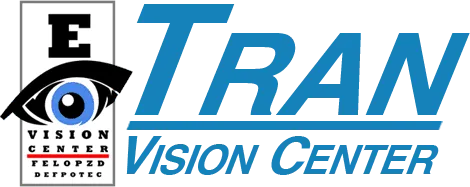
Imagine being able to work, drive, and play sports without having to depend on glasses or contact lenses. LASIK (laser in-situ keratomileusis) may make this a reality for you. This laser eye surgery can treat many common vision problems.
What LASIK Can Do
LASIK (pronounced “LAY-sik”) can improve your vision. This procedure reshapes the cornea (surface of the eye), helping you to more clearly focus what you see. Advanced laser technology makes LASIK fast and often painless. Vision begins to improve soon after surgery, and may become stable within weeks.
Your Eye Care Team
You may work with the following eye specialists:
- An ophthalmologist, a physician who performs your surgery and oversees your eye care.
- An optometrist, an eye doctor who may be involved with your pre- and post-operative care.
- An ophthalmic technician, who may assist during LASIK surgery.
Today’s LASIK Technology
Tools that your eye doctor may use during LASIK include:
- An excimer laser, which produces a concentrated beam of cool ultraviolet (UV) light. Each pulse of this laser can remove a tiny portion of corneal tissue. An eximer laser is so accurate that it can cut a notch in a human hair. It generates no heat and is gentle totissue.
- A microkeratome, a microsurgical instrument that can make extremely thin, precision cuts.
- A femtosecond laser, which produces rapid pulses of light. Like a microkeratome, it can make thin, precise cuts.
What You Should Consider
LASIK is not for everyone. Be sure to discuss your medical history with your eye doctor. You may not be a good candidate if you:
- Do not have stable vision.
- Have a vision problem that is too severe.
- Have a disease or condition that slows healing or increases your risk of infection.
- Have an eye disease, such as advanced glaucoma or cataracts.
- Are taking certain medications.
- Are pregnant or nursing or are planning to become pregnant in the near future.
- Are uncomfortable with the idea that you may still need glasses or contacts after LASIK surgery.
How Lasik Treats Vision Problems
LASIK permanently reshapes the cornea so that light focuses correctly. First, the surgeon uses a microkeratome or a femtosecond laser to create a flap in the surface of the cornea. He or she then uses an eximer laser to reshape the cornea. Finally, the flap is replaced so the cornea can heal.
If You’re Over 40
With age, the eye’s lens becomes stiff and can’t accommodate easily. This causes presbyopia (difficulty focusing on nearby objects). LASIK can’t treat presbyopia, so if you’re over 40 you may need reading glasses even after surgery. Another option for coping with presbyopia is monovision. To create monovision, LASIK is used to adjust one eye for near vision and the other for distance vision. This option is not for everyone, so discuss it with your eye doctor. A trial period of monovision using contact lenses may help you decide if it’s right for you.
Evaluating Your Vision
To find out whether you’re a good candidate for LASIK, you’ll need to have a thorough eye exam. This exam may include:
- Tests of refraction (your corrective lens prescription).
- Measurement of your pupil.
- A thorough exam of your cornea.
- Mapping or scanning of the corneal surface to reveal its exact shape.
- Ultrasound (images made using sound waves) to measure corneal thickness.
- Dilation (enlargement of your pupil to allow your eye doctor to examine the inside of your eye.
- Questions about your general health, eye health, and medical history.
Your LASIK Experience is quick and causes little or no discomfort. The procedure takes about 15 minutes for each eye. After surgery, your doctor monitors your progress and postoperative care.
Getting Ready
Your eye doctor will discuss with you how to prepare for surgery. You’ll also decide whether both eyes will be treated in the same session. Arrange in advance for a ride home after surgery.
What to Expect During the Procedure
- You may be given medication to help you relax. You then lie on your back in a reclining chair.
- The area around your eyes is cleaned. Eye drops numb your eye. Your eyelashes are taped out of the way. A small device keeps your eye open.
- A suction ring is then placed on the eye. This will cause your vision to dim and may cause slight discomfort.
- Your surgeon creates a flap in the surface of your cornea. This takes less than a minute. You may feel light pressure, but no pain.
- During the rest of the procedure, your vision is blurry.
- The laser is positioned above your eye. You are asked to stare at a light. When your eye is in the right position, the laser is activated.
- You will hear the laser clicking. After 10 to 90 seconds, laser treatment is finished. The flap is then put back in place. The corneal tissue sticks to itself, so no bandages or stitches are needed.
Your Recovery
While you recover, you may wear a shield to protect your eye. At first, your eye may itch, burn, or feel irritated. It may also water or hurt a little. To promote healing:
- Protect or eye from bumps and pokes. Don’t scratch, rub, or touch your eye.
- Use eye drops as directed by your eye doctor. You may be prescribed several kinds of drops.
- Follow your eye doctor’s instructions about sports, swimming, driving, and other activities. Wear sunglasses and restrict your use of makeup and sunscreen as directed.
Risks and Complications
You may experience temporary or permanent:
- Burning
- Dryness
- Blurriness
- Halos
- Glare
- Starbursts
Medical complications may include:
- Inflammation
- Infection
- Flap problems
- Vision Loss
As Your Vision Improves
- You may have mild blurry vision at first. If you have vision problems, you may notice them more at night.
- Vision often clears within a few days. It should become stable in 4 to 12 weeks.
- If you’re over 40, you may need reading glasses, even if you didn’t use them before.
- In follow-up visits, your eye doctor will monitor healings and vision changes.











